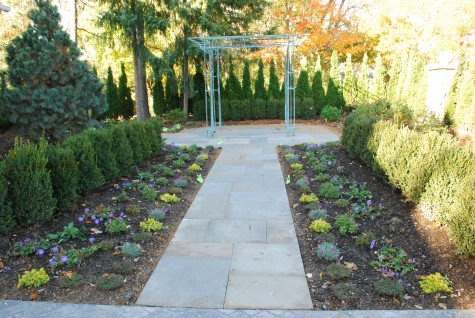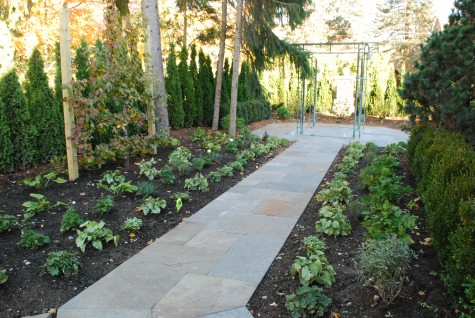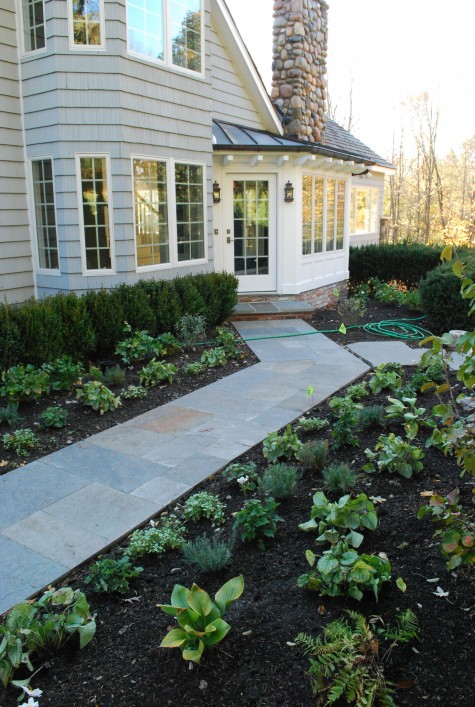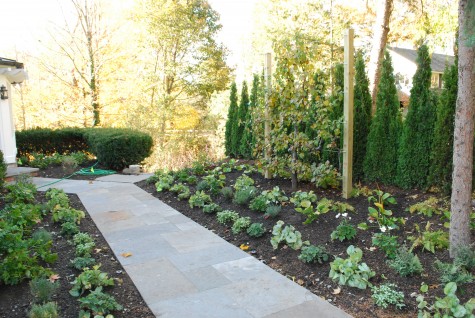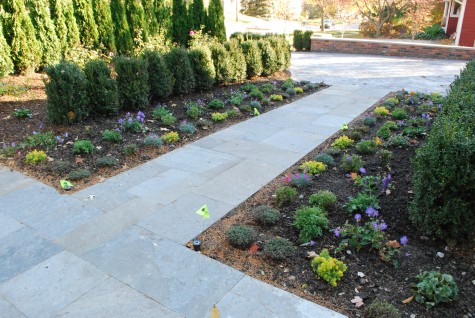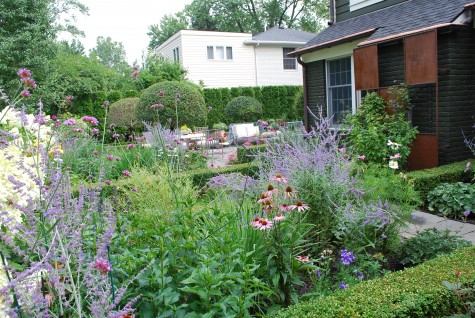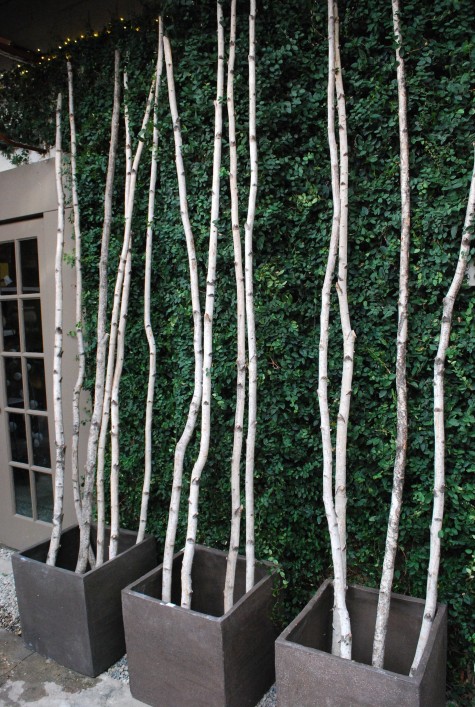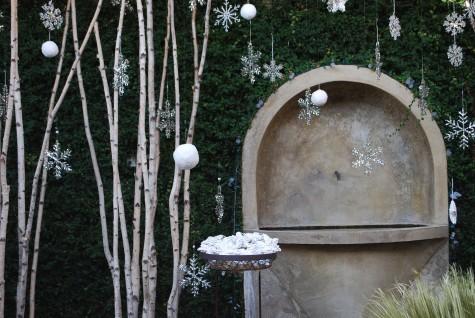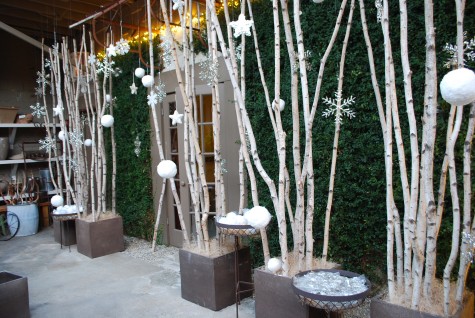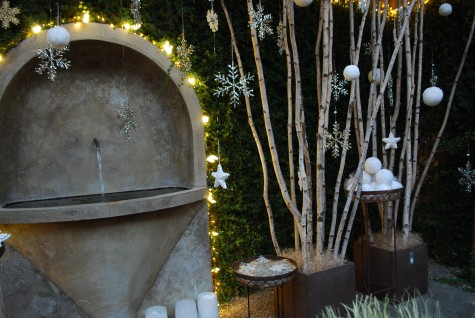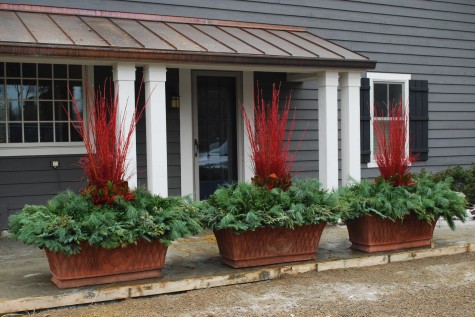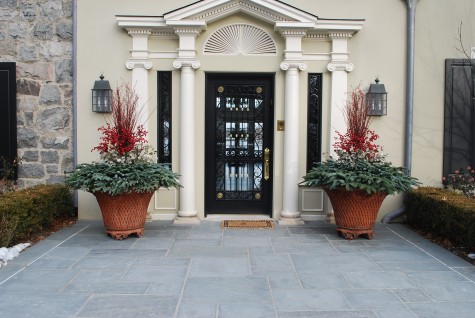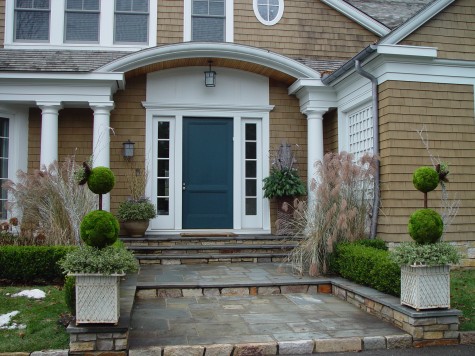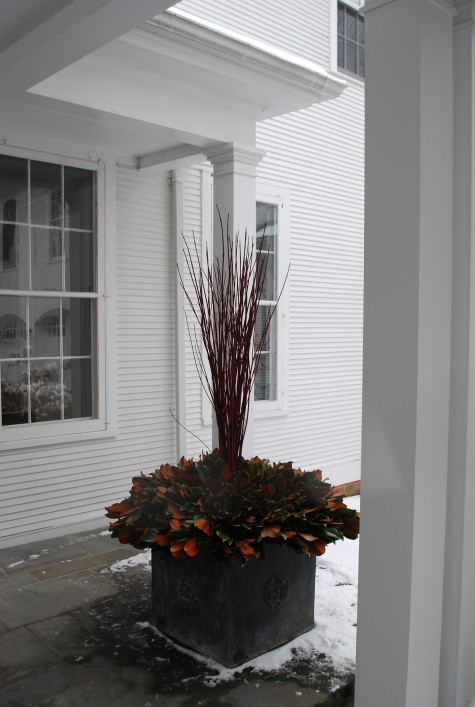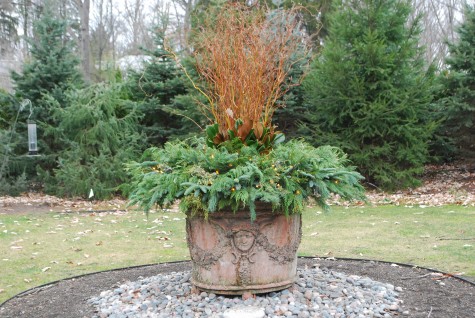Though I do not talk about it much, a considerable amount of my time is spent as an administrator. Though I would much rather be designing anything-a topiary sculpture, a series of containers, a pergola, flowers for a wedding, a series of steel pots, a landscape, a vignette in the shop, a perennial garden, I am in fact a small business owner. My simple version of what business ownership means to me can be summarized as follows. My love of landscape and gardens, my interest in people who have the inclination to garden, my need to create-my plan is that my business enchants my clients, and sustains the evolution and expression of my entire group.
Sustenance is a word fraught with meaning to every gardener. Healthy soil sustains everything that roots into it. Countless plants provide sustenance-grapes, tomatoes, chard, cauliflower, potatoes, corn. The farmers in this country feed lots of people-I am grateful to them for the cippolini onions, garlic, chard, beet greens and tomatoes I bought last Saturday at market. Sufficient water encourages new trees and shrubs to root. I am particularly interested in my clients having success with their landscapes, their gardens, their pots, as I know they will get sustenance of some kind from it if they stick with it.
I am sustained in no small part by my banker Linda Saperstein. For years she has made the administration of my business easier via National City Bank. I am a very small business, but she has always treated me with spot on attention and respect. NCB has now become PNC bank- she did not skip a beat. I got lots of help from her, handling that change. I had a letter/question from the bank; call our 800 number, it said. 20 unsuccessful minutes later, I called Linda. Never call the PNC 800line, she tells me today. That’s what I’m for. Call 1-800-Linda, ok? She not only handled my request, she made me laugh.
I have been thinking about her all day. I love how willing, able and available she is. Our European shipper will collect everything Rob purchased; Linda electronically transferred the funds needed to their bank. The process of collection, packing and shipping from overseas begins when the shipper has the funds to pay Rob’s bills. Linda made that happen with dispatch. Should you be interested in a banker who answers her phone and knows your name, call Linda Saperstein at PNC Bank. As far as I am concerned, PNC Bank’s real name is Linda Saperstein.
